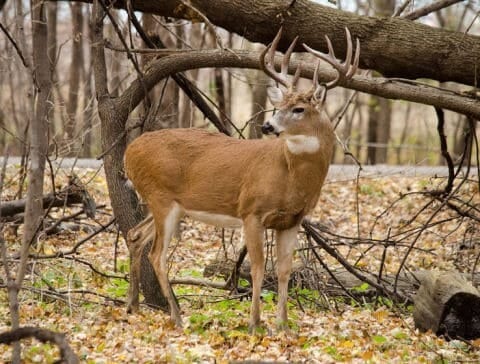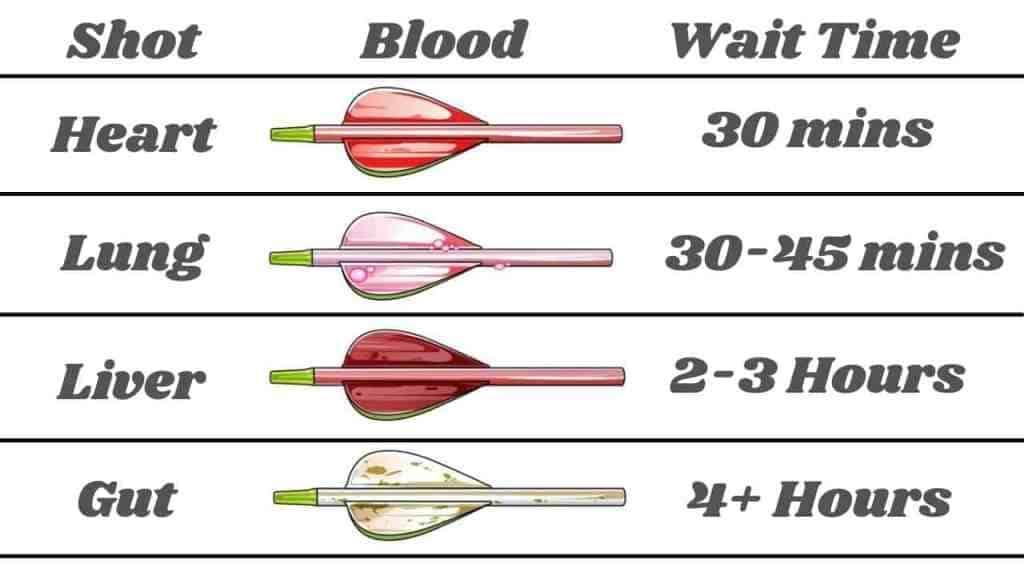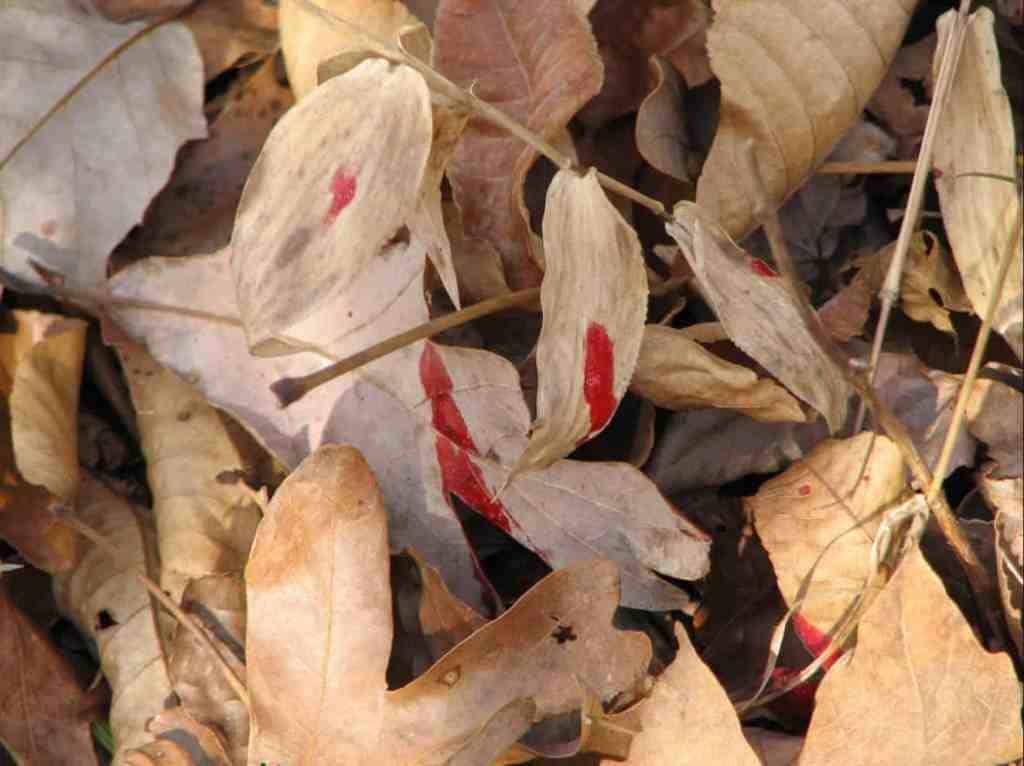After you put in all the hard work of finding a good place to hunt, scouting it out, hanging stands, and waking up at 5am for a week straight, it can be really discouraging when you finally shoot a big buck but you are not able to find it. We have all been there at one point or another. However, there are plenty of tricks we can use to recover hard to find deer. Let’s dive into the process of tracking a hard to find whitetail so that you can become a better and more successful hunter.
Important Steps Before the Shot
There are actually a couple of things you need to make sure of before or just after the shot. You need to know where the deer was and which direction it ran off. It can be easy to get excited and shoot a deer and then be too excited to pay attention to those details, but it will pay off in the end if you can focus on the deer for just a few more seconds.
What I like to do is just after I shoot a deer, I watch where it runs off too and make a mental note. I say to myself, “okay, it ran off this way just past that funky-looking tree right there”. Then after the deer is out of sight, I look back to where I shot it at and make another mental note. I say “okay, I shot the deer standing right there next to that specific plant or vine” (notice how I use a physical marker).

This is especially important if you are rifle hunting and shoot one from a longer range. The farther you walk from your stand the more different things can look, so rule number one of tracking whitetail is knowing where in the woods you hit them.
Wait Before You Track a Whitetail
Most hunters already know this, but you need to wait before you go chasing after your deer. Even if the deer fell right where you shot it. Whitetail, and animals in general, can be very dangerous when they are wounded. They will do anything in their power to get away, even if it means attacking you.
Plus, if your deer is still alive, you run the risk of pushing that deer further through the woods, which is going to make it very hard to find. These two reasons combined are why I wait at least 30-45 minutes before going after my deer, even if I made a perfect shot.
If you are not sure of the shot, you should probably wait about an hour or two. Most deer are going to die if you shoot them anywhere in the vitals. Although some shot placements will take longer to kill than others.
Personally, I do not like to wait 8 plus hours or overnight like a lot of people tell you to. If you do that your meat is going to taste terrible and at that point, you are just going to recover a rack.
Quick Tip: When you do start going after your deer, you need to do it slowly and quietly. Especially if you do not think the shot was the best. You want to hunt your way down the blood trail. That way you do not scare anything off, or jump your wounded deer.
What Your Arrow Can Tell You About the Shot
If you are bow hunting, you can tell a lot about the shot from the arrow. Finding the arrow can also be a challenge at times when you do not get a clean pass through. If your arrow did not go all the way through, just keep following the path you watched the deer take, or the blood trail if it is there. You will find different shades of blood on your arrows that will let you know where it hit.

If you hit the lungs, you will see light red blood that possibly has bubbles in it. If you see darker blood, that could mean you hit the liver or a muscle only. A heart shot will give you bright red blood on your arrow.
If you hit them in the heart or the lungs, there is a good chance that they did not go far. If you hit them in the stomach, you may have to look a bit longer. The deer would have been able to make it much farther before they had to stop.
I should also say that I have killed deer before that did not leave any blood on my arrow, although they still left quite the blood trail. Most recently it was when I shot a doe in the neck. My arrow was clean as could be, but there was a blood trail two-foot-wide all the way to her.
Quick Tip: You can also smell your arrow. I know that sounds odd, but you will be able to tell if it went through a deer just by the smell of it. It is hard to explain in words so you are going to have to try this one yourself.
Reading & Following a Whitetails Blood Trail
So, after you have waited at least 30-45 minutes after the shot to track your deer, go to where you shot it at, not where it ran to. Then start looking for blood. Sometimes there will be a lot of blood at the start and sometimes there will not be any. If you are not seeing any blood, that is okay, depending on the shot, the chest cavity may have to fill up with blood before it starts spilling out.

If you see blood, follow it. Although, if it is just a drop or squirt here and there, do not move from a drop until you see the next drop. This will keep you from losing the blood you already found. Keep repeating this process, and as long as you do not lose a blood spot you should run into your deer fairly soon.
If you do not see blood at the start, you can walk in the direction the deer went. Walk slowly, and look for any signs you can find. Things like hair, or turned up dirt. You should eventually find something.
Although if you do not find anything, you can start searching in a wider area. Look back and forth on where you think the deer ran, and expand that trail by 10 feet on each side. There have been plenty of times when I thought a deer ran past a certain spot but it was actually 5 foot on the other side. If you did not find any blood at the start and still could not find any sign of the deer after searching the path it ran, you may have missed it.
What to Do When You Lose the Blood Trail
The worst thing ever is when you are tracking a good blood trail and it ends without a deer laying in it. It happens to all of us at one point or another. There are plenty of reasons why a blood trail could stop, but the important part is it will almost always start again. If you lose the blood trail, keep going in the general direction that the deer was going. If there is a well-defined trail, you can follow that, but chances are you are going to need to expand your search area.
All it takes is one small drop of blood to get you back on track, so continue to search all over the area you think they could have gone. It is not uncommon for a trail to stop and then pick up again 50-100 yards later. You just have to be dedicated enough to find it.

If you are having trouble, go back to the last place you found blood. Use some reasoning to figure out which way the deer would have gone. Most of the time, a wounded animal is going to take the path of least resistance. For example, a wounded deer will go down hill rather than up hill if given the option.
If you are at the end of your witt with the blood trail, a last ditch effort is to check surrounding creeks or ponds. Wounded animals will go to water for the same reason you run a cut under water at home. If there is a creek nearby, they may have gone in it.
Putting It All Together | Tracking & Retrieving Your Whitetail
Hopefully you can use the former section of this article to track down your deer, but after a while of tracking, it is super exciting to find your deer. Even though you have spent a long time looking for it, you should always approach with caution. Wounded animals are no joke, and you need to be able to confirm your deer is dead before you grab a hold of those antlers. Approach your whitetail from the rear in every situation. If you find it with its head facing you and you think its dead, you still need to circle around and come at it from the rear.
Think about it, if you had to track that deer deep into the woods, odds are that no one is going to be able to find you fast enough if you get hurt. Safety is always the number one priority.
When You Just Can’t Find Your Deer
Sometimes you just can not find a deer, even after 12 plus hours of searching. Some shots seem like they are perfect and then that deer runs for half a mile. It happens. Although as a hunter you should put in a fair amount of effort to retrieve any animal you may have killed. Look everywhere you can think to look for hours on end if you have to. However, sometimes it just does not come together and we lose deer.
This is a lot more common when you are bow hunting. I know for a fact that I lost more deer in my first couple of years bow hunting than I had my whole life rifle hunting.
Although, if you are confident the deer is dead somewhere and you are willing to pay a couple hundred dollars, there is one more thing you can do.
The Last Ditch Effort | Calling in the Tracking Dogs
In many states, there are dog tracking services you can call. Although dogs only work when the deer is dead, so you definitely want to wait until the next day if you are going to call in the dogs.
Dogs are obviously much better at following trails than we are. Where we are limited by seeing physical blood, dogs do not need blood at all. They can go off the individual scent of that deer and follow it in all sorts of conditions.
Midwest Whitetails has a great video with everything you need to know about tracking dogs, check it out here.

